ANTHONY COPPING
is a British entrepreneur, TV
presenter, music producer and
composer. He is the founder and
CEO of the creative tech
company Binumi, and the co-
founder and director of the virtual
events platform Totem Hybrid.

In 2004, Copping’s television documentary series Last Voices from Heaven was broadcast on National Geographic Channels International. It followed Copping’s journey into the remote jungles of the South Pacific islands to capture the music and cultural spirit of people that the West knew little about. National Geographics called it “The most dangerous journey ever undertaken in the search for indigenous music.”
Ten years previously, Copping had begun working on an idea to make a series of concept albums – recording and preserving the last tribal voices of the South Pacific. It was following the success of the first album, Siva Pacifica, that National Geographic commissioned the Last Voices from Heaven television documentary series, filming Copping’s continuing journey of musical exploration and preservation.
The TV series, described by National Geographic as `the most dangerous journey ever undertaken in the search for indigenous music’, was nominated for the Most Outstanding Documentary Series at the 47th annual TV Week Logie Awards in 2005.
Copping’s expeditions gave rise to 8 albums – each featuring a fusion of modern sounds and field recordings of indigenous music. The best known are Siva Pacifica, released on Virgin EMI in 1997 and Last Voices from Heaven, released on Sony BMG in 2004.
The 20-year project involved 35 expeditions to over 100 islands in Polynesia and the Melanesian archipelago, including remote jungles inhabited by tribes which had rarely encountered people from outside their community.
Musical exploration.
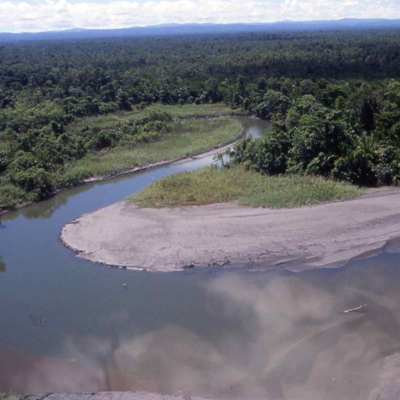
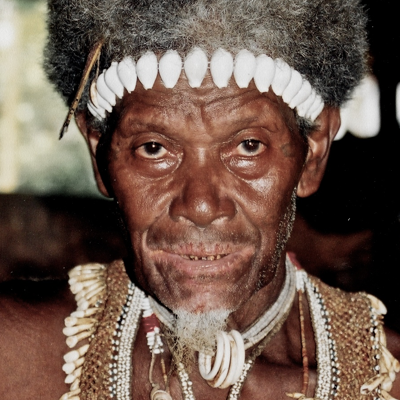
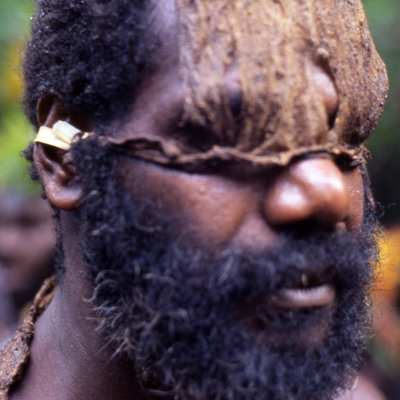
In 1990, Copping started work on field recordings for Siva Pacifica – a musical bridge between the world of Pacific islanders and Western civilisation. In the event, the album gave rise to a project which lasted for 20 years. Between 1990 and 2010, Copping visited over 100 Pacific islands to make field recordings – ritual and ceremonial songs, lullabies, laments for the dead and sacred spirit songs. On many occasions, he was almost certainly the first outsider to have heard such music.
In 2002, National Geographic commissioned the documentary, Last Voices from Heaven, and Copping was joined on a number of expeditions by a film crew.
Trips to the outer islands were usually by small propeller plane, landing on grass strips. Exploration was also made via small fibreglass motorised boats and in West Papua, an attempt to find `the oldest song in the world’’ involved a month-long trip in a dugout canoe down the Mamberamo River.
Arriving and leaving villages were major events. Hundreds of people would turn up on beaches or chase planes down runways to welcome them or wave farewell. Gaining permission to record or film village performances generally took days of negotiations, including payments, and the
choice of which music they’d capture was debated in village huts into the early hours over intoxicating betel nut and kava. On the island of Ambrym, one tribe permitted Copping to hear and record their music, but sang from behind a wall of palm leaves because it was forbidden by the spirits for outsiders to see them.
Playing back the performances on headphones, often to every villager, took many hours and caused considerable amusement. For many villagers, it was the first time they had ever heard their own voices played back to them.
The process was far from easy. Early on, in the Solomon Islands, Copping developed malaria. The condition reoccurred numerous times throughout his expeditions, reaching crisis point during a trip to a remote part of Choiseul Island. Delirious, and with a dangerously high fever, Copping was taken by boat to Buala, on Santa Isabel Island, and treated by a witch doctor whom he believes saved his life. While filming in a remote jungle village of West Papua, Copping and his cameraman were caught up in a violent tribal altercation after filming the `strangers’ of a neighbouring village. Surrounded by men armed with spears and machetes, they reached their boat by handing out tobacco and clothing before escaping downstream.
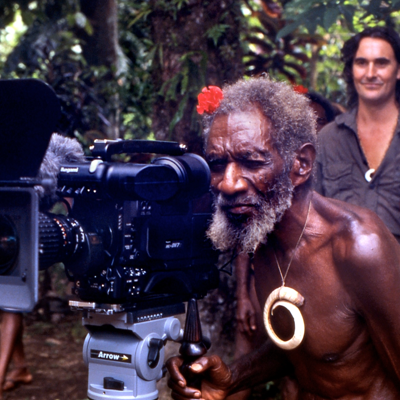
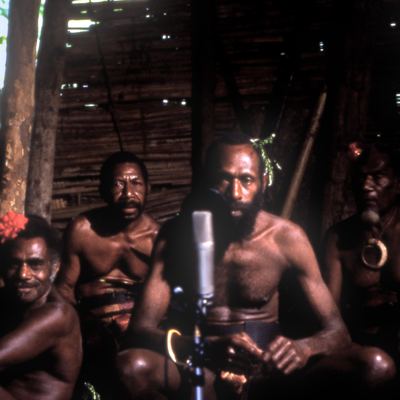

Field recordings and production
Copping’s field recordings were made using a pair of battery-powered condenser microphones, often in the open air. Village huts were refashioned into soundproofed rooms, and the team made use of local churches, guest houses and government buildings as well as studios in Auckland, New Zealand and Sydney, Australia.
Locating power for microphones and recording devices was a challenge. It often involved hours or even days of travel to a generator or electricity source. When all else failed, they would record using a small dictaphone.
To capture a realistic sense of place, Copping recorded ambience in each location – the sounds of a particular village, jungle or river as well as the weather conditions at the time. These sounds were used alongside the songs themselves to create an accurate representation of what it felt like to be there.
Historically, musical instruments in the Southern Pacific islands[1] were made almost exclusively from local materials such as wood. Metal was rarely used. To reflect this soundscape, falling or husking coconuts were used as drums and percussion, rhythms were insect sounds and voices provided harmonic movement.
Knowledge of ancient music was generally held only by tribal elders whose recollections were sometimes limited to just one or two lines. Despite Copping’s efforts to uncover
the ancient traditions, it became clear that much of the music had already been lost. Spoken word was therefore recorded, and used in fragments to add context to some tracks. Back in the studio, instruments such as flutes were electronically sculpted to provide a modern feel, and Pacific islander musicians based in Sydney came in to play drums and other instruments. Copping also used recordings by the English composer and explorer David Fanshawe, a major inspiration.
In the course of his exploration, Copping noticed a distinct difference in mood between Polynesian and Melanesian music – explained by each region’s use of major and minor keys. Polynesian music tended towards bright cheerful major keys, Malanesians favoured the darker, more sombre minor keys. While these mood differences are reflected across the albums, Copping also wanted to foster intercultural dialogue by representing music throughout the whole region, He therefore amalgamated recordings, melodies, languages and voices from separate islands within individual songs. Log drummers from multiple countries feature across all the albums.
Some performances and voices represent a spiritual connection to ancestors, others are laments in free form, sometimes in an unknown language. The last medicine men and sorcerers, often in their very late years, were invaluable sources for the provenance and significance of these performances.
Albums
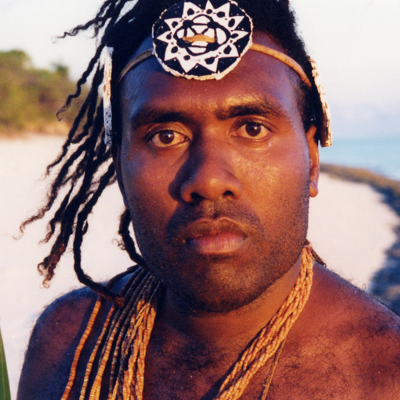
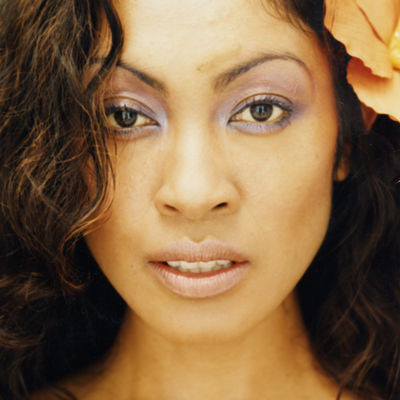
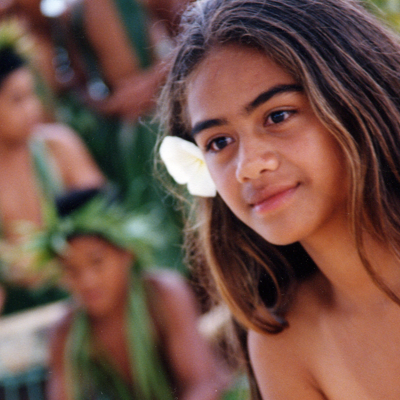
The albums are a fusion of modern sounds with ancient Polynesian and Melanesian music, taken from over 1,000 hours of field recordings. The first album, Siva Pacifica was released on the Virgin EMI label in 1997. It features more than 200 performers singing and chanting in 40 different languages. The title comes from the Savosavo language in which siva’ translates as `rhythm’. The second album, Last Voices from Heaven, was released in 2004 on the Sony BMG label. An 8 CD box set was released independently in 2010 under the title Last Voices.
Many tracks feature the singing and guitar playing of Pascal Oritaimae, from the ꞌAreꞌare province of Malaita, whom Copping met during his very first expedition. The two became close friends, with Oritaimae working closely on compositions, and accompanying Copping on many of the subsequent trips. Pascal Oritaimae is now a champion of indigenous music, encouraging young people to safeguard and perpetuate the endangered musical traditions of their region.
Robyn Loau is the lead vocalist and vocal arranger on several tracks, singing in the diverse range of Southern Pacific languages which she had to learn before and during recording. Virgin France made Loau the `face’ of the album Siva Pacifica and she featured heavily in a country-wide marketing campaign on the public national TV channel France 2.